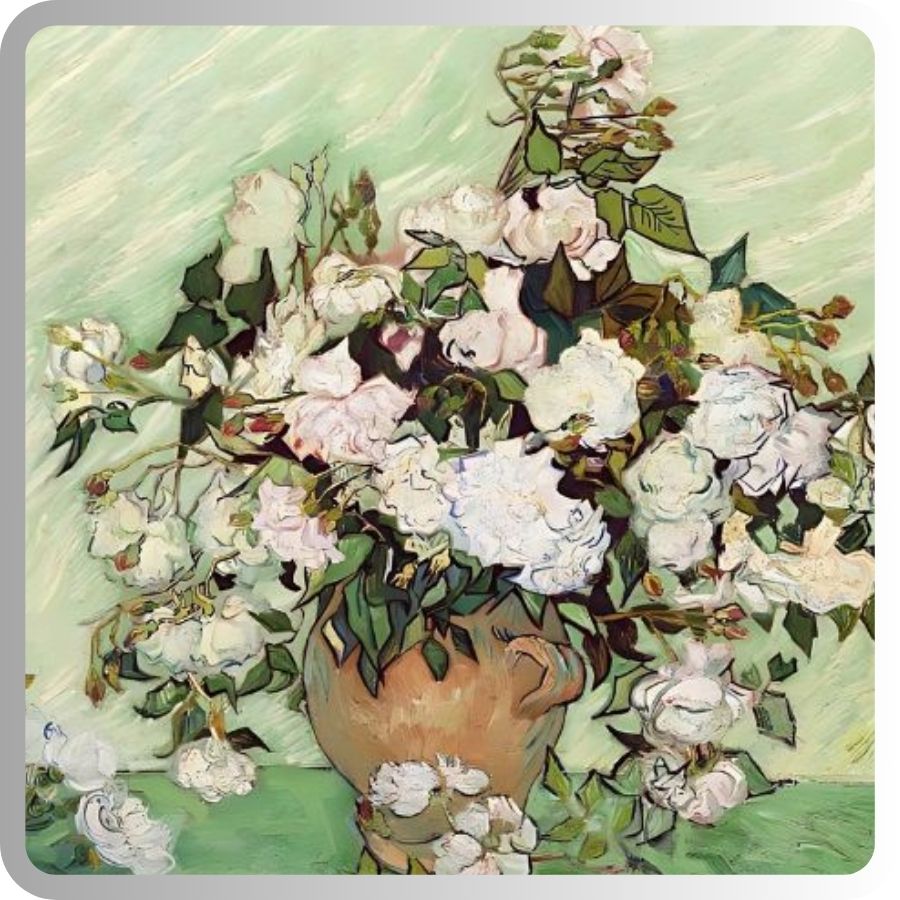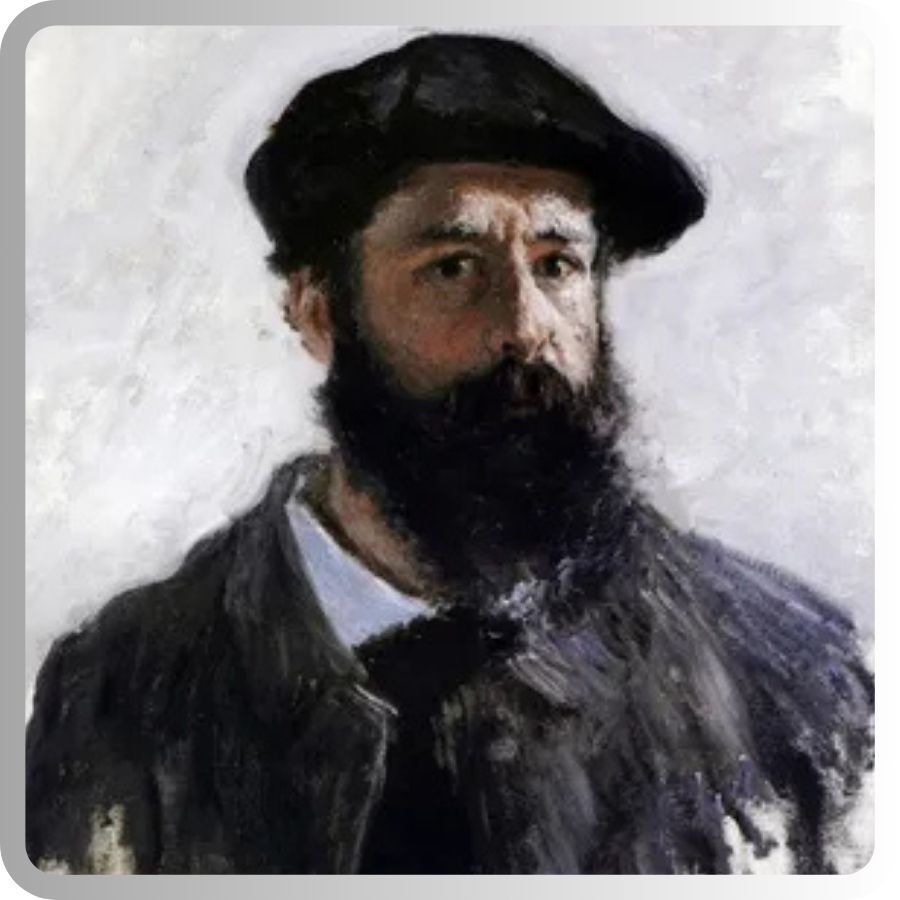Vincent van Gogh, one of history’s most celebrated artists, created over 2,000 artworks, including some of the most recognizable paintings in the world. His use of vivid colors and expressive brushstrokes made masterpieces like The Starry Night, Sunflowers, and Café Terrace at Night unforgettable. Though largely unrecognized during his lifetime, Van Gogh’s work is now displayed in major museums and admired by millions. Below, we explore 10 of his most famous paintings and what makes them so remarkable.
In this article, we’ll mention of the most renowned van Gogh paintings that have inspired generations. From the swirling skies of “Starry Night” to the vibrant “Sunflowers,” these masterpieces not only display van Gogh’s incredible talent but also offer a glimpse into his inner world. For those who are passionate about art, van Gogh paint by numbers kits for adults provide a unique way to recreate your version of these legendary pieces. Whether you’re just beginning your journey into art history or have been exploring it for years, van Gogh’s artwork continues to captivate and inspire.
Early Life and Influences of Vincent van Gogh
Vincent van Gogh, born in 1853 in the Netherlands, grew up in a supportive van Gogh family that shaped his early years. Despite struggling with various jobs, his passion for art always shone through. It wasn’t until his late twenties that van Gogh seriously pursued his artistic career, influenced by modern art trends of the time.
Van Gogh moved multiple times, including significant relocations from Holland to Antwerp, Paris, and Auvers-sur-Oise, which impacted his personal struggles and artistic development. His relationship with his brother Theo was especially important; Theo provided emotional and financial support, allowing Vincent to focus on his art. Van Gogh's brother criticized his early work, 'The Potato Eaters,' highlighting its dark tones and the qualities he found lacking for a successful sale.
Paul Gauguin, a fellow artist, also played a significant role in van Gogh’s life. Their brief but intense friendship influenced van Gogh’s use of color and bold brushstrokes. During this period, van Gogh created some of his most famous works, experimenting with vibrant colors and expressive forms.
Though his life was marked by struggle, his determination and passion led to the creation of a unique artistic style that has left an indelible mark on art history. Van Gogh’s early life and influences are crucial in understanding the depth and emotion behind the masterpieces he left behind, forever changing the landscape of modern art.
Challenges and struggles of van Gogh‘s life
Vincent van Gogh’s life was marked by extreme loneliness and emotional turmoil. Struggling with his mental health, van Gogh famously cut off part of his left ear, a desperate act that highlighted his inner battles. Van Gogh's art during his early years in the Netherlands was marked by rawness and emotional intensity. Seeking help, he admitted himself to a mental asylum in Saint-Rémy de Provence, where he hoped to find some peace and stability.
Despite his challenges, this period became a turning point as van Gogh began to create some of his most powerful works. The pain he endured deeply influenced his art, leading to a new life in his paintings that continues to resonate today.
Final Years and Death
In the final years of his life, Vincent van Gogh’s art reached new heights, marked by vibrant colors and emotional intensity. Despite his worsening mental health, Van Gogh produced numerous masterpieces, creating around 2000 artworks that reflect his artistic evolution and emotional experiences. Van Gogh wrote to his brother about the profound struggles he faced, yet his dedication to his art never wavered. Tragically, he passed away in 1890, leaving behind a legacy that would later be celebrated worldwide. Today, the Van Gogh Museum in Amsterdam honors his extraordinary contribution to the art world, showcasing his most famous works.
Top 20 Van Gogh's Most Famous Paintings to Know and Appreciate
When it comes to Vincent van Gogh, his iconic works are instantly recognizable and celebrated around the world. In this section, we explore the top 20 van Gogh most famous paintings that every art lover should know and appreciate. From "Starry Night" to "Sunflowers," these masterpieces have left an indelible mark on the world of art, showcasing van Gogh's unique style and emotional depth. Discover the brilliance of his work through these unforgettable pieces.
-
The Starry Night (1889)
Vincent van Gogh’s "The Starry Night" (1889) is one of his most iconic works, showcasing a night sky swirling with vibrant, Prussian blue tones. A midnight canvas illuminated by twinkling stars and a radiant moon, van Gogh's Starry Night is not merely a portrayal of the starry sky but a deep dive into the artist's psyche. The turbulent swirls and passionate blues reflect an artist's mind, both at peace and in chaos with the universe.
-
Sunflowers (1888)
Golden petals kissed by the sun; van Gogh's Sunflowers is a luminous symphony of warmth and joy. In a series, Van Gogh brought to life these flowers with varying shades of yellow, symbolizing gratitude and friendship. Every bloom in this masterpiece seems to echo Vincent's words: "I am seeking, I am striving, I am in it with all my heart."
-
The Café Terrace at Night (1888)
Nightscapes held a special place in Vincent's heart. With "The Café Terrace at Night," he painted a world where the night wasn't dark and dreary but vibrant and alive. The golden light spilling from the café onto the cobblestone streets feels like a warm embrace on a cool evening.
-
The Bedroom (1889)
A simple room with modest furnishings, "The Bedroom" is a window into Van Gogh's world. The harmonious shades of blue and the tilted perspective make it intimate, offering glimpses of his hopes and solitude.
-
Irises (1889)
With a burst of purples and greens, "Irises" is a tribute to nature's splendor. Painted during his time in an asylum in Saint-Rémy, the flowers served as a beacon of hope, representing the beauty and resilience of life amidst challenges. This masterpiece is one of the many van Gogh flowers paintings we admire.

-
The Night Café (1888)
An intimate space pulsating with colors and emotions. "The Night Café" brings together the melancholy and vibrancy of nocturnal hours. With its reds and greens clashing, the scene speaks of the turmoil and restlessness Van Gogh often felt.

-
Almond Blossoms (1890)
Inspired by the birth of his nephew, this painting bursts with delicate white blossoms against a clear blue sky. It's a symbol of new beginnings and the ephemeral nature of life, reminding us of spring's promise amidst winter's chill.
-
Wheatfield with Crows (1890)
A vast field, a turbulent sky, and crows taking flight. Many believe this to be Vincent's last painting, a reflection of his tumultuous mind. The vibrant warm yellows contrasted with the darkening sky, making it a work of intense emotion and depth.
-
Portrait of Dr. Gachet (1890)
Dr. Gachet, the physician who cared for Van Gogh during the last months of his life, is immortalized in this painting. The melancholic gaze, the purple foxgloves, and the thoughtful pose capture not just a man but an era, a mood, and the profound connection between the artist and his doctor.
-
Self-portrait with Bandaged Ear (1889)
Among the many self-portraits Van Gogh painted, this one stands out, capturing a poignant moment after he severed part of his ear. The rawness, the vulnerability, and the gaze that seems to look beyond the viewer make it an intimate confession of pain, regret, and hope.
The magic of Van Gogh lies not just in his ability to paint but in his capacity to infuse every piece with a soul. His paintings, be it "Starry Night" or "Sunflowers," go beyond colors and canvas; they are heartfelt letters, written with brushes, from a genius to the world.
-
Potato eaters (1885)
This artwork is a raw depiction of rural life, showing a peasant family sharing a humble meal. Painted in earthy tones, this work captures the gritty reality of the 19th-century Dutch working class. The dim lighting and rough textures highlight the harshness of their daily struggle. Van Gogh's choice of muted colors and intense brushstrokes brings a sense of honesty and depth to this powerful, social commentary.

-
Van Gogh’s Chair (1888)
Van Gogh’s Chair is a charming portrayal of his own simple, yet cozy, wooden chair. Painted during his time in Arles, this piece uses vibrant colors and bold brushstrokes to capture the essence of his daily life. The chair, paired with a rustic pipe and a few scattered items, reflects a personal touch and van Gogh’s unique perspective on everyday objects. It’s a glimpse into the artist’s world, filled with character and warmth.
-
Wheat Field with Cypresses (1889)
Wheat Field with Cypresses captures a lush, sunlit landscape dotted with bold, cypress trees. The painting’s vibrant colors and energetic brushstrokes create a lively scene, blending golden wheat with striking green cypress against a swirling sky. Van Gogh’s unique style gives the field a sense of motion and vitality. This work, painted during his time at the Saint-Paul-de-Mausole asylum, reflects both his love for nature and his emotional intensity.
-
The Yellow House (1888)
The Yellow House presents a vibrant view of the house where he lived in Arles. Painted in vivid yellows and bold brushstrokes, the piece captures the warm, sunny atmosphere of his surroundings. The painting features a simple yet inviting house and the surrounding streets, reflecting van Gogh’s affection for his temporary home. It’s a snapshot of a key period in his life, filled with bright colors and a sense of personal connection.
-
The Red Vineyard (1888)
This canvas is a striking depiction of autumnal grapevines in vivid reds and oranges. Painted in Arles, this piece captures the lush, fiery colors of the vineyard against a crisp, blue sky. The painting is notable for being the only work van Gogh sold during his lifetime, highlighting its special place in his career. Its bold colors and lively brushstrokes offer a glimpse into van Gogh’s unique perspective on the changing seasons.

-
Fishing Boats on the Beach (1888)
Vincent van Gogh’s “Fishing Boats on the Beach” portrays colorful boats resting on a sunlit shore. The painting captures a tranquil moment with vibrant blues and warm yellows, highlighting the beach’s peaceful atmosphere. Van Gogh’s bold brushstrokes bring the scene to life, reflecting his fascination with the sea and the everyday beauty of coastal life.

-
The Sower (1888)
This masterpiece shows a lone farmer scattering seeds under a glowing sunset. The painting uses vibrant yellows and blues to emphasize the energy and movement of the sower. Van Gogh’s dramatic brushstrokes capture the essence of agricultural labor and the beauty of the evening sky, reflecting his deep connection to nature and rural life.
-
Saint-Paul Asylum, Saint-Rémy (1889)
This canvas by van Gogh shows the view from his window at the asylum where he stayed. The painting features a serene garden with vibrant flowers and a distant view of the asylum’s buildings. Van Gogh’s bold colors and lively brushstrokes capture both the tranquility and isolation of his time there, offering a glimpse into his world during recovery.
-
Church at Auvers (1890)
The canvas Church at Auvers depicts a charming church with its distinctive, slanted roof and bold, swirling colors. Painted shortly before his death, this artwork captures the church’s serene presence in the village of Auvers-sur-Oise. The dynamic brushstrokes and vibrant hues reflect van Gogh’s emotional state and his unique vision of rural life.

-
Head of a Skeleton with a Burning Cigarette (1886)
This brilliant artwork, Head of a Skeleton with a Burning Cigarette, presents a striking and somewhat eerie image. The painting features a skull with a lit cigarette, combining macabre elements with van Gogh’s distinctive brushwork. The stark contrast of the glowing cigarette against the dark background creates a dramatic effect, showcasing van Gogh’s exploration of life and death.
Conclusion
In conclusion, Vincent van Gogh's masterpieces continue to captivate and inspire. Whether you're looking to recreate famous paintings or explore his art through paint by numbers kits, van Gogh’s work offers endless fascination. His inspirational quotes about art and life remind us of his unique vision and enduring legacy. Embrace his art and find your own creative spark.










